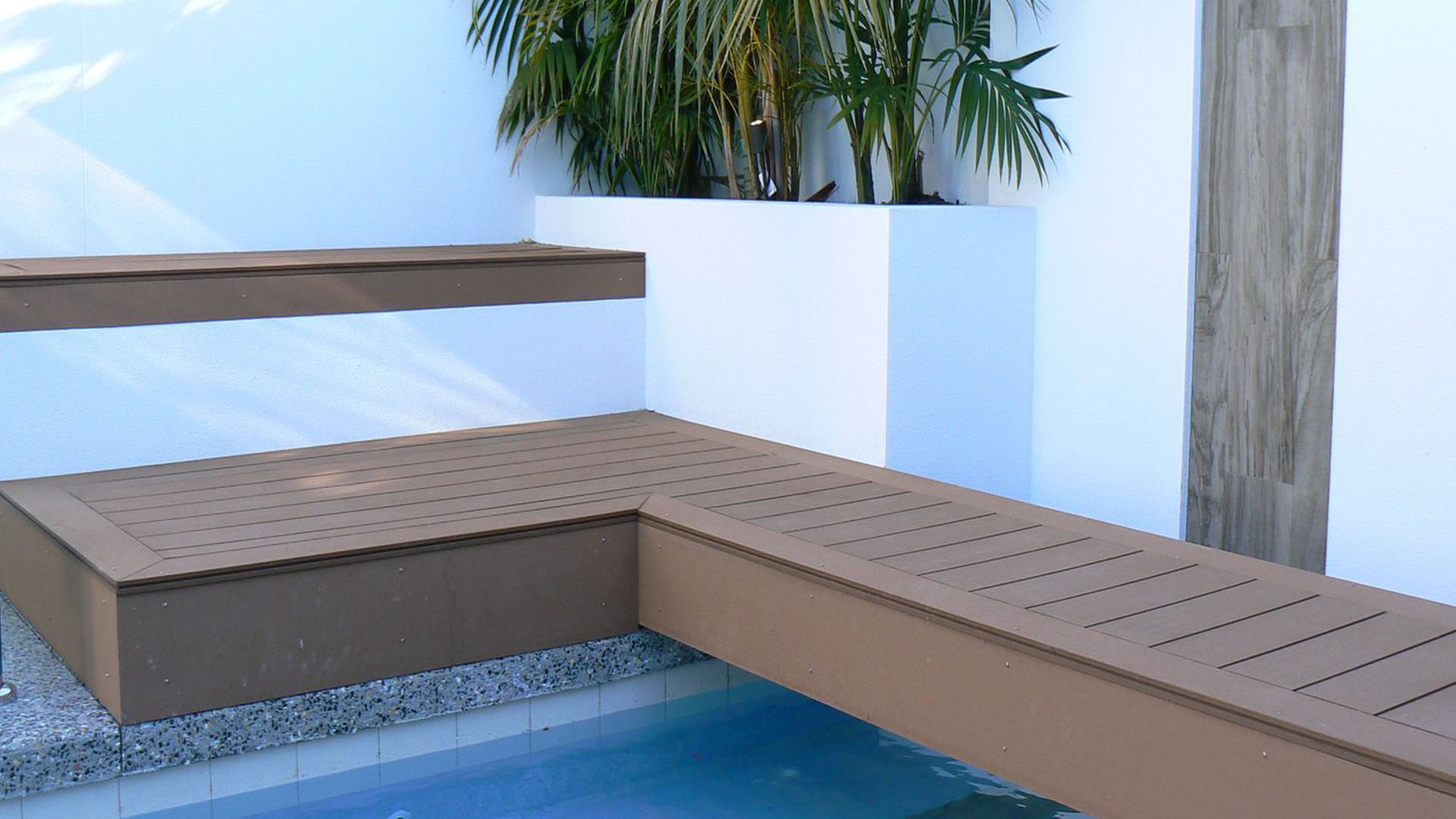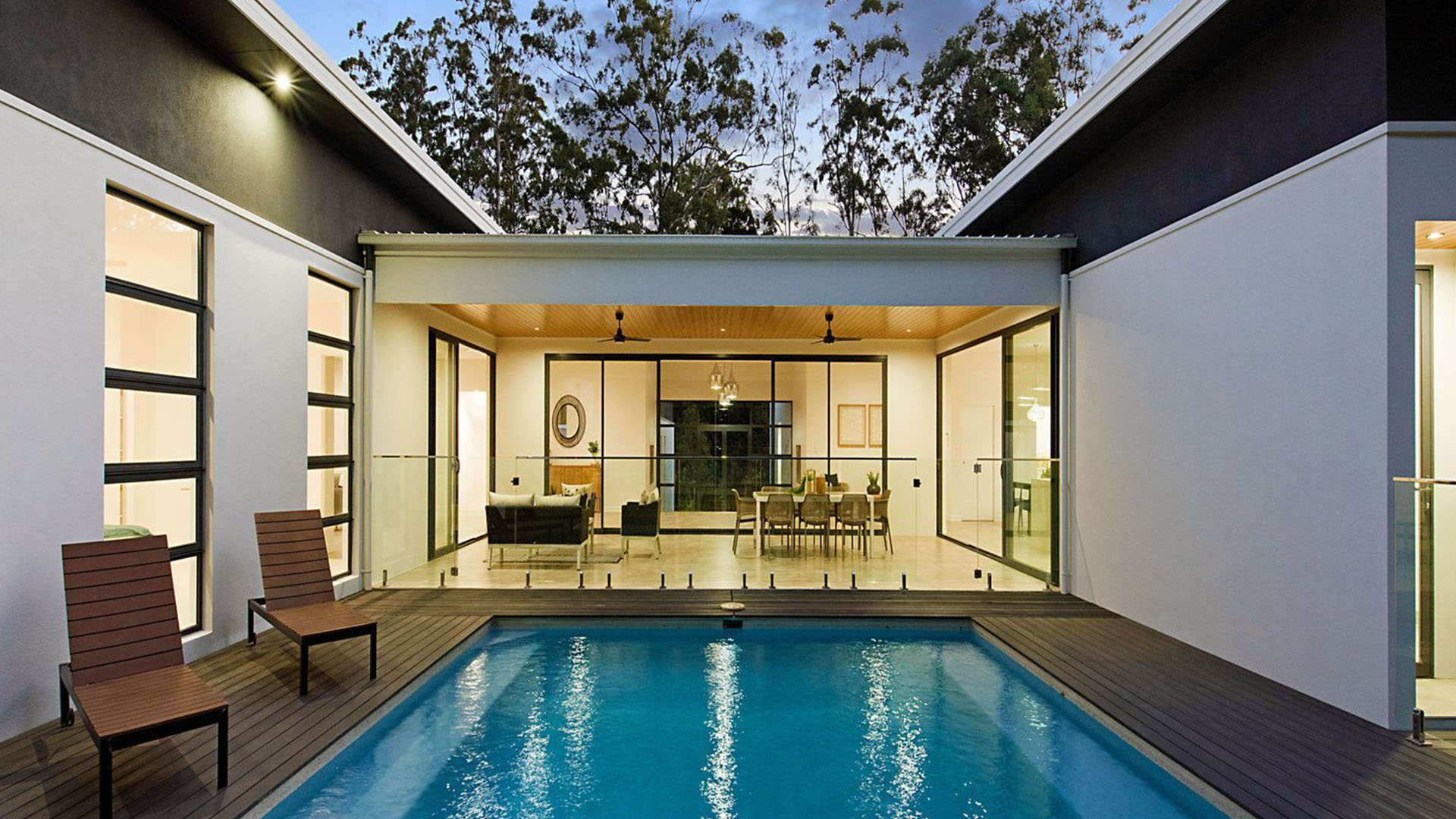Composite Decking – What You Need to Know
Composite Decking: What You Need to Know
When it comes to enhancing your outdoor living space, it’s hard to look past composite decking. It is a low-maintenance solution with a wide range of colours and styles to choose from. And the best part? It will continue to look new for years to come.
In this guide, we’ll explore everything you need to know about composite decking, from what it’s made of, to its top advantages. If you’re looking for an alternative to timber decking, keep reading to discover why composite decking might be the best choice.
What Is Composite Decking?
Composite decking side steps away from conventional timber decking and offers a durable and versatile option for outdoor living. There is an extensive range of composite boards available, made from materials including recycled hardwood and plastic, often with a polyurethane resin or polypropylene coating.

PermaTimber® 146x22mm 146 HG Decking Walnut
Composite Decking are typically classified into two main categories:
- Uncapped Composite Decking
Uncapped composite decking products are regarded as first-generation technology. They are more affordable and offer great value, however, they are less resistant to fading and scratching. They will often be more susceptible to thermal expansion which should be considered in the design or layout of your outdoor living area.
Products such as the ModWood® Natural Grain Collection and PermaTimber® Composite Decking are uncapped decking products.
- Capped Composite Decking
Capped composite decking products are more expensive but have a tough outer layer surrounding the inner core material. As a result, capped boards are resistant to everyday wear and tear. They are generally scratch and fade resistant and are less effected by thermal expansion.
ModWood® Xtreme Guard, Trex® Composite Decking and Tractio Composite Decking are amongst the products and brands that offer capped decking boards.
Although there are two types of composite decking boards, they all offer the following key benefits.
Benefits of Composite Decking
- Material Durability in Tough Conditions
Composite decking is extremely durable. Unlike traditional timber, composite boards are resistant to rotting, warping or splitting, even when in harsh weather conditions. With options perfect for bushfire prone areas, this decking is the ultimate choice. It is unaffected by moisture, UV rays and termites, providing a long-lasting solution.
- Low-Maintenance Solution
Say goodbye to the cycle of sanding, staining and sealing timber decking boards. Composite decking is a low-maintenance option designed for minimal upkeep with a UV resistant surface. Sweeping leaves and debris from the deck and a simple rinse with soapy water and a soft brush, will ensure your deck looks its best all year round.
- Aesthetic Appeal
Composite decking offers a timber-look in a wide range of modern colours and grains. Whether you prefer rich browns, dark greys or a whitewash finish, composite decking offers colours and textures that mimic real timber. These decking boards are available with options such as embossed timber grain patterns, a brushed finish or a smooth sanded look to suit a range of styles.
- Eco-Friendly Option
For the environmentally conscious homeowner, composite decking is an appealing choice. Its production process incorporates recycled or reclaimed materials, reducing the demand for virgin timber and plastic. By choosing composite decking, you’re contributing to a more sustainable future without compromising on the quality or aesthetics of your deck.
- Splinter-Free and Safe
Composite decking has a smooth, splinter-free surface that is ideal for families with children and pets. You can comfortably walk on it barefoot without worrying about splinters or rough edges. Although some composite decking boards require face fixings, a wide range of composite decking boards include a grooved edge for concealing fixings. This safety feature enhances the overall look and experience of the decking.
- Cost Considerations
While composite decking may have a higher initial cost than timber decking, it proves cost-effective over its lifespan due to its minimal maintenance requirements and extended durability. Most timber decks require sanding, staining and sealing every two to five years, adding to the maintenance costs.
Why should I choose Composite Decking?

PermaTimber® 146x22mm 146 HG Decking Amalfi
For a durable and reliable outdoor decking solution, composite decking proves to be an innovative and long-lasting option. Its durability, low-maintenance and aesthetic appeal make it an obvious choice for homeowners seeking a deck that lasts.
If you’re looking for the perfect composite decking for your outdoor living space, Bowens has a wide range of options for your needs. With premium brands to choose from such as Trex®, PermaTimber®, ModWood®, Millboard® and Tractio, you know you’re getting decking boards that will last. Explore Bowens range of composite decking online or visit your local store today.
Want to know how to clean and maintain your composite decking boards? We’ll walk you through the simple steps, tools and materials you’ll need in this blog.